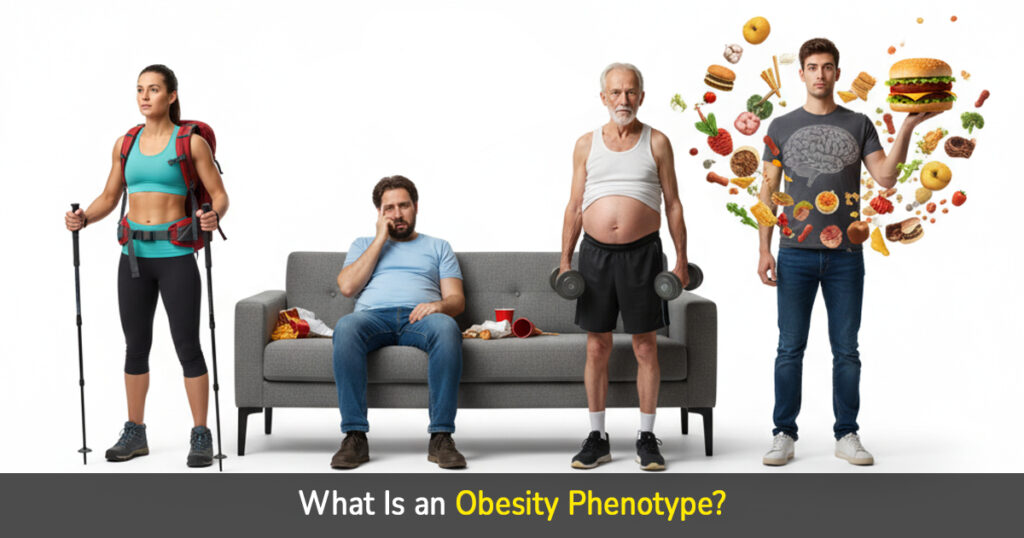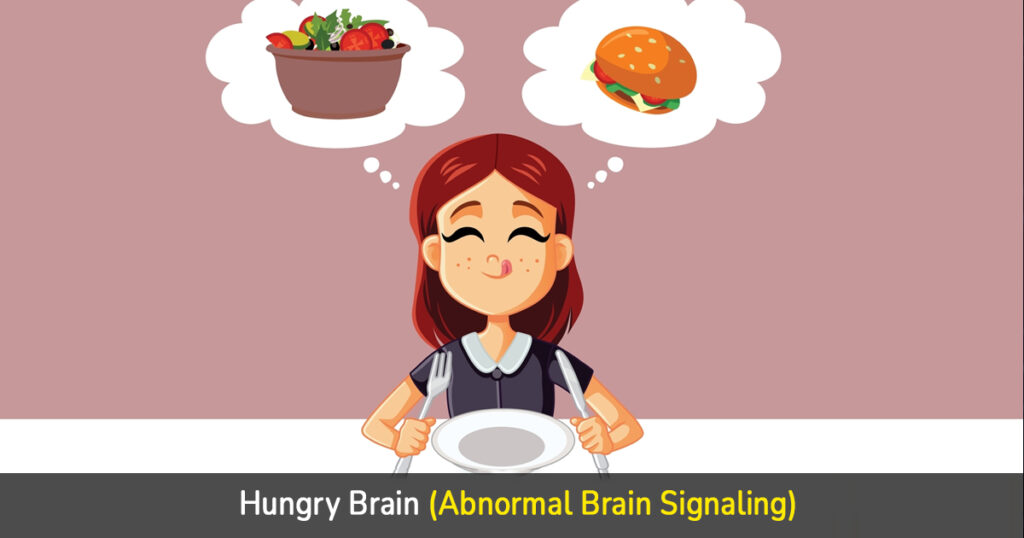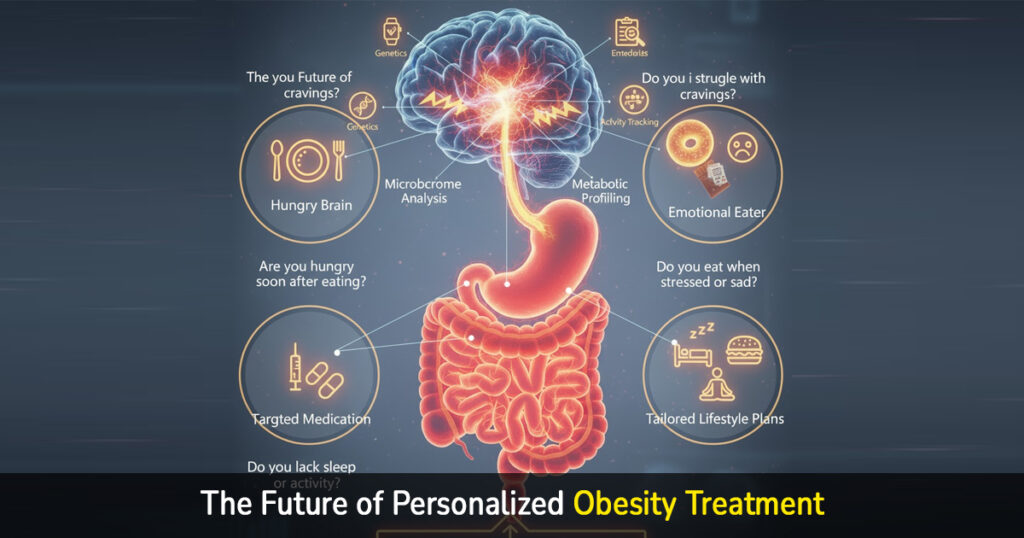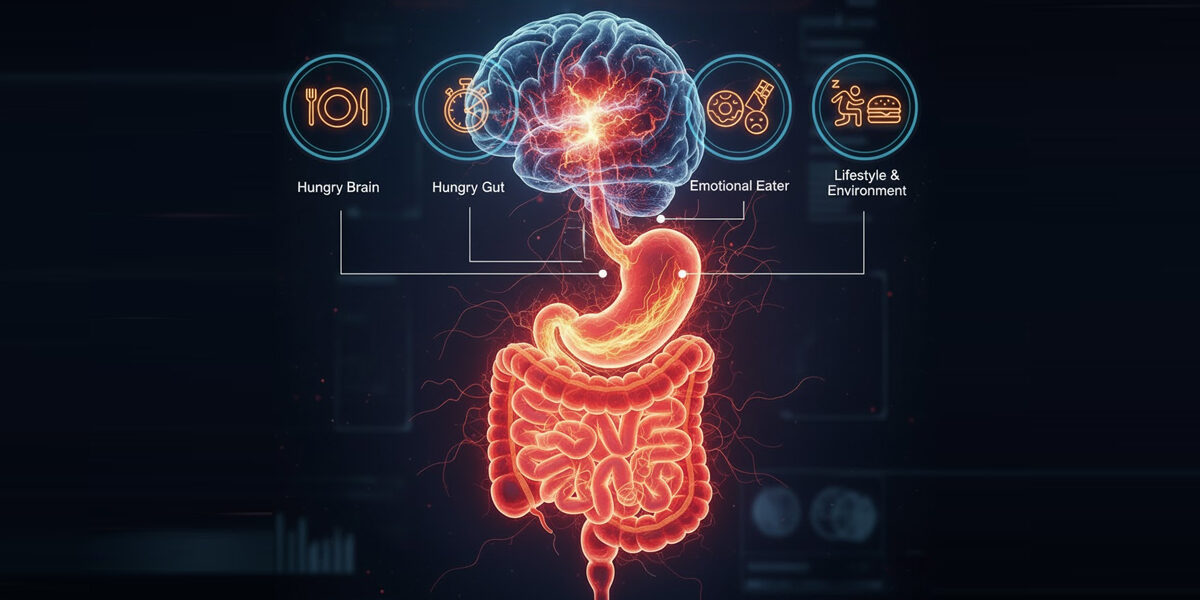Obesity is frequently considered as a single condition characterized by excess body fat, but recent science provides a more complicated picture. Obesity is not the same for everyone, each person gains and stores fat differently, has various metabolic responses, and has unique health concerns. Researchers have identified multiple obesity phenotypes, or distinctive patterns of obesity, based on biological, behavioral, and metabolic differences between individuals.
Understanding your obesity phenotype can help you customize your diet, exercise routine, and medical therapies to your specific needs. Let’s look at what obesity phenotypes are and how to identify the four primary forms.
What Is an Obesity Phenotype?

An obesity phenotype is a collection of characteristics—genetic, metabolic, and behavioral—that influence how an individual develops and maintains obesity. While two persons may have the same BMI, their underlying physiology, fat distribution, and metabolic responses might vary significantly.
Recognizing these characteristics enables healthcare practitioners to deliver more focused interventions rather than generic weight loss advice.
Why Understanding Obesity Phenotypes Matters

Traditional weight loss methods frequently fail because they ignore individual variances. Some people acquire weight as a result of a slow metabolism, while others do so due to hormonal imbalances or variances in how their bodies metabolize food.
Identifying a person’s obesity phenotype allows doctors and dietitians to:
- Create personalized diet and workout plans.
- Identify metabolic risks early on.
- Increase weight loss success rates.
- Reduce your risk of chronic diseases such as diabetes and heart disease.
The Four Main Obesity Phenotypes
Obesity is broadly classified by researchers into four major phenotypes, each with its own set of molecular and behavioral characteristics.
1. Hungry Brain (Abnormal Brain Signaling)

This type of obesity develops when the brain’s hunger and fullness signals are disturbed. Individuals with the “Hungry Brain” phenotype are likely to overeat since their brain does not recognize when they are full.
Key Traits:
- Strong hunger, even after a substantial meal.
- Preference for high-calorie foods.
- Possible imbalances in appetite-regulating hormones such as leptin and ghrelin.
What Helps:
Structured meal plans, portion management, and appetite-regulating medicines (such as GLP-1 drugs) can all be beneficial. Mindful eating and avoiding processed, high-sugar foods may also aid in brain-body communication.
2. Hungry Gut (Rapid Digestion and Frequent Hunger)

People with the “Hungry Gut” phenotype are hungry soon after eating because their stomach empties too quickly. This fast digestion promotes frequent eating and excessive calorie intake.
Key Traits:
- Constant hunger right after meals.
- Regular munching or grazing behavior.
- Metabolic studies have shown fast stomach emptying.
What Helps:
Diets heavy in protein and fiber slow digestion and keep you satisfied for extended periods of time. Small, balanced meals spaced throughout the day, as well as adequate hydration, can help manage hunger signals.
3. Emotional Eater (Reward-Driven Eating)

The “Emotional Eater” phenotype is defined as eating in reaction to emotions other than hunger, such as stress, boredom, grief, or happiness. Food becomes a coping tool, often resulting in overconsumption of high-calorie comfort foods.
Key Traits:
- Emotional eating rather than hunger-driven eating.
- Cravings for sweet or fatty foods.
- Weight fluctuations are linked to mood changes.
What Helps:
Behavioral therapy, mindfulness, and stress-management approaches are extremely beneficial. Developing alternate coping skills, such as exercise, writing, or meditation, can help to reduce emotional overeating.
4. Slow Burner (Low Energy Expenditure)

Individuals with the “Slow Burner” obesity phenotype have a naturally slower metabolism, which means they burn fewer calories at rest and while exercising. This makes losing weight more difficult, even with a healthy lifestyle.
Key Traits:
- Losing weight is difficult despite calorie management.
- Low resting metabolic rate.
- Tendency to gain weight quickly after overeating
What Helps:
Strength training combined with moderate exercise can increase muscle mass, which boosts metabolism. Eating enough protein and getting enough sleep also aids metabolic function.
Other Factors Influencing Obesity Phenotypes

While the four phenotypes give a useful framework, it’s vital to recognize that obesity is influenced by numerous linked factors, including:
- Genetics: Family history has a huge impact on how the body stores fat.
- Hormones: Imbalances in insulin, cortisol, leptin, and thyroid hormones influence weight regulation.
- Gut Microbiome: The composition of microorganisms in the gut can affect metabolism and hunger.
- Weight control is influenced by lifestyle factors such as physical exercise, stress, and sleep quality.
Understanding your obesity phenotype in light of these characteristics will assist you and your healthcare practitioner in developing a complete, personalized strategy for long-term success.
How to Identify Your Obesity Phenotype

Identifying your phenotype usually requires medical evaluation and testing. Healthcare providers might use:
- Metabolic testing (to determine the resting metabolic rate).
- Hormone level tests (for leptin, insulin, thyroid, and so on).
- Gastrointestinal studies (to assess digestion and stomach emptying).
- Behavioral assessments (to identify eating triggers and patterns).
Some advanced obesity clinics and research centers now provide phenotype-based assessments to help guide personalized treatment plans.
The Future of Personalized Obesity Treatment

The concept of obesity phenotyping is changing the way experts approach weight control. Instead of depending primarily on calorie tracking or BMI, doctors are incorporating metabolic, hormonal, and psychological data to create personalized care plans.
This precision-medicine approach aids in determining why a person issues with weight gain and which solutions will be most beneficial for them whether through lifestyle changes, medication, or surgery.
Future obesity treatments will most likely involve genetic analysis, AI-driven food advice, and microbiome-based therapeutics to allow for even more personalization.
Conclusion
Obesity is far from a one-size-fits-all issue. Understanding the obesity phenotype whether it is influenced by appetite, emotions, metabolism, or digestion can lead to more successful and personalized weight management strategies. Working with your particular biology rather than battling your body with generic diets or exercise routines results in better, more sustainable outcomes.
As science continues to uncover the intricate pathways underlying weight gain, the emphasis on obesity phenotyping is a promising step forward in personalized health. Knowing your body’s specific patterns allows you to confidently and clearly take control of your weight journey.

